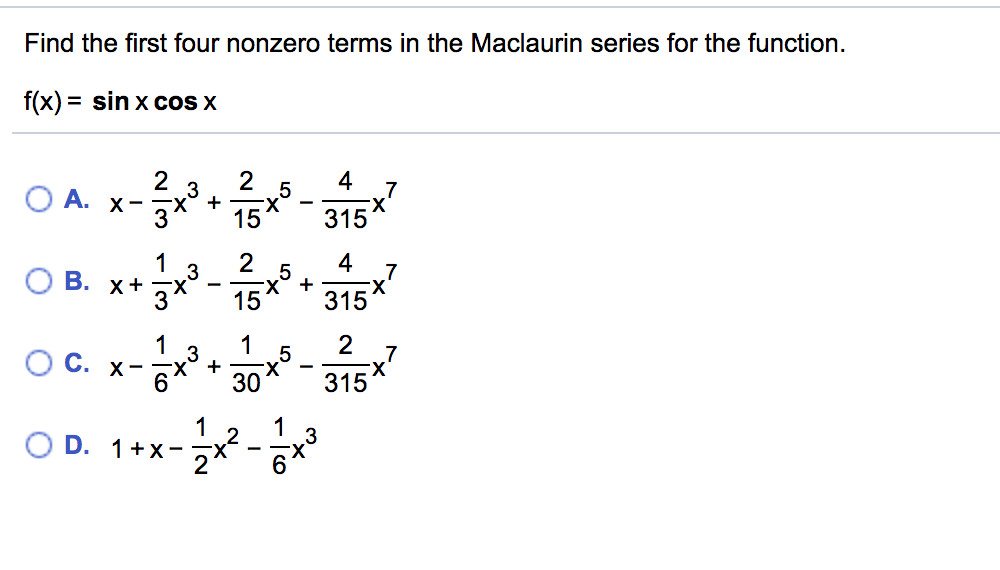The sequence of steps is very similar to the sin x derivation that was shown earlier. Maclaurin & taylor polynomials & series 1.

Solved The Taylor Series For Sin X, Cos X, And E^x Are Well | Chegg.com
You have a negative out there.

Sinxcosx maclauren polynomial. The “c” in the expansion is the point. Deriving the maclaurin series for tan x is a very simple process. And we could keep going, but once again, it seems like there's a pattern.
X0 + f '(0) 1! Notes on the symbols used in the formula: In this video lesson we will learn about the taylor and macluarin series.
F(x) = ln(x+ 1) f(0) = 0 f0(x) = 1 x+1 f0(0) = 1 f 00(x) = 1 (x+1)2 f (0) = 1. Finding the coefficient of the x_ term in a maclaurin polynomial, given the formula for the value of any derivative at x=0.practice this lesson yourself on k. And finally, using the formula for the maclaurin series:
The theorem mentioned above tells us that, because. How do you find the maclaurin series for #(sinx)(cosx)#? N ∑ n=0 f (n)(0) n!
Use the maclaurin series of sin(x), cos(x), and eˣ to solve problems about various power series and functions. Since sin 0 = 0, it is the cosine. So the first term, the constant term, will just be f of 0.
Use taylor polynomials to approximate the function cos (x) around the point x = 2. It is more of an exercise in differentiating using the chain rule to find the derivatives. Xn = f (0)(0) 0!
We derived the series for cos (x) from the series for sin (x) through differentiation, and. Find the fourth degree maclaurin polynomial for the function f(x) = ln(x+ 1). We could make our polynomial approximation.
Calculus power series constructing a maclaurin series. X2 + f '''(0) 3! Find the taylor series expansion for sin(x) at x= 0, and determine its radius of convergence.
The taylor series, or taylor polynomial, is a representation of a function as an infinite sum of terms. By trigonometric identities, we mean the identities we use whenever we need to express the. As you can imagine each order of.
Then the next term will be f prime prime of 0. Then the next term will be f prime of 0 times x. = lim x→0 sinxcosx x +( lim x→0 − 1 x2.
Complete solution again, before starting this problem, we note that the taylor series. Using this general formula, derive the maclaurin expansion of sin 2x. And then the fourth derivative evaluated at 0 is going to be 0 again.
X1 + f ''(0) 2!

Solved Find The First Four Nonzero Terms In The Maclaurin | Chegg.com
